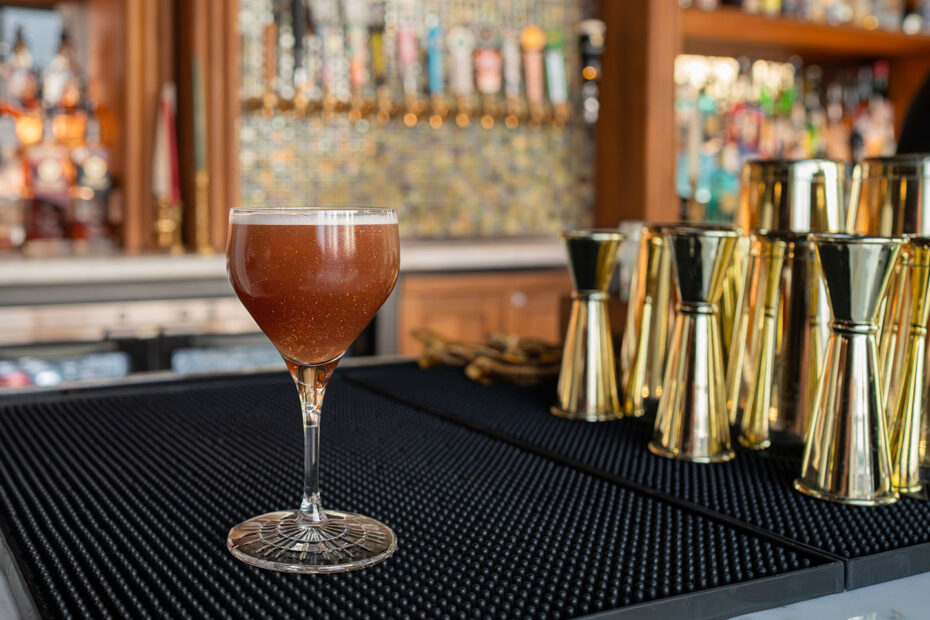It’s that time of the year folks – daily news inches and moment-by-moment debate and intrigue (more on that below). Yep, it’s time to pore over the legislative proposals potentially set to make their mark on Utah’s liquor landscape for the year ahead. The presently slim S.B. 328 (compared to the previous years that is) doesn’t contain a dramatic amount of change; after all, last year’s go-around sought to tackle the dearth of license availability through a multi-year-long rebalance. That update should again increase license supply during 2025. This will continue through 2031.
So what’s in store for 2025? While a change to cider definitions and a return of mini bottles were mooted earlier in the year – the current version of S.B. 328 has nary a mention of these. That said, there are some interesting highlights, Here are three that caught my eye.
Beer pickup
Remember those halcyon days when you could plonk a six-pack in your drive-and-load order? Click, vroom, pour. That might be coming back should this language make the final cut:
(8)(a)An off-premise beer retailer may sell, offer for sale, or furnish beer: (i)at a drive-up loading area, if the drive-up loading area is contiguous to the off-premise beer retailer’s licensed premises; or (ii)subject to Subsection (8)(b), at a designated parking stall.
Online ordering and pickup are already offered at state-run liquor stores, so this seems like a natural evolution. Part of me hopes this is a stepping stone to delivery in some mythical future utopia, but alas, I realize that’s probably a pipedream.
Straw tests
As incredulous as this one might seem – it’s technically illegal for a bartender to test their mixological creation before handing it over to you. Any form of imbibing on the clock is banned under Utah liquor law, even via the widely employed straw test you’ll see up and down the country. You know the one – the bartender dips a tasting straw into your drink, removing nano-drops of a beverage to sample. Until maybe this year, should this one come to pass…
(1) As used in this section, “straw test” means a technique used by staff of a retail licensee to taste liquor to ensure the quality, flavor, and alcohol content of the liquor by: (a)dipping the straw into the liquor; (b)removing the straw in a manner that a small amount of liquor remains in the straw; and (c)tasting the small amount of liquor from the straw.
At first blush, you might imagine this allows your sommelier to taste your wine – is it indeed corked? Sadly, Utah’s notorious express language approach might come into play here. Express language means that unless something is explicitly stated in the code, it’s a no-go. Express language is what originally led to axe-throwing businesses failing to secure licenses – the fact that the activity wasn’t enumerated as a specific entertainment activity in the liquor code (it was added in later years mind you). The law as written regards only liquor, so might preclude wine, or indeed beer. and cider.
Alcohol overlay districts
This is where we get technical folks. Sorry. So let’s start with the basics. Under Utah’s current proximity laws, businesses are restricted from receiving a license, should they fall within a set distance from a community location. Community locations then, are defined as:
a church, public or private school, a public park, public playground or a library.
When granting a liquor license, the law states that:
Restaurants may not be located within 300 feet measured by ordinary pedestrian travel, or 200 feet measured in a straight line. All other outlets may not be located within 600 feet measured by ordinary pedestrian travel, or 200 feet measured in a straight line.
The impact of the laws has been covered over and over in the local press. Multiple businesses have fallen foul of proximity laws, sometimes finding themselves just a few feet too close to a community location. Circa 2017, Utah law did allow for a variance – essentially a discretionary option for neighbors to say “We don’t care, go ahead and grant that license, welcome to the neighborhood”. Variances were dropped from the legislation in recent years, making proximity, a hard and fast rule. Should alcohol overlay districts become a thing, the variance might return, albeit in a novel geo-bounded fashion.
Two overlay districts are proposed in the bill – a slab of downtown city, and the point of the mountain. Again, read S.B. 328 for specific boundaries. Within said districts:
The proximity requirements described in Subsection (2) do not apply if the proposed outlet or proposed restaurant and the community location are located within the boundaries of a designated project area zone or an alcohol overlay district.
Ergo, should your business fall inside one of these specially designated zones – proximity rules are a thing of the past. Neato. Should this be implemented it would set an intriguing precedent that perhaps other communities could campaign for.
Let’s take the example of the core of Sugar House. The library that sits along 1100 E and 2131 S technically prohibits any new liquor licenses being granted to new businesses within 300ft as the diner walks (200 as the crow flies). This is in obvious discord with the reality that swathes of licensed businesses sit happily around the location – grandfathered before variance laws were dropped. My money would be on local communities with thriving hospitality cores perhaps campaigning for their own designated zones in the years ahead.
But wait, there’s more!
Remember how I mentioned the fluidity and day-to-day intrigue of all of this? In the time it took to compose the above article, this potential amendment was proposed. And look, what do we have here… the return of the variance? Well, kinda, maybe, sort of, ish. The specific language in this proposed amendment states:
permits a local government to authorize an outlet or restaurant with an alcohol license to be in proximity to a public park or playground;
The language retains the overlay district idea while also redefining the notion of a community location as either a school or church. In theory that means businesses close to parks, playgrounds, and libraries can now petition their city to allow them to apply for a liquor license. The hard and fast rule of proximity would presumably then still apply to churches and schools, unless inside an alcohol overlay zone. Simples.
Whee. Again, expect more proposals, twists, and turns as we get close to the finish line. I’ll bring you the full report of what makes the final cut when the session ends in the next week.
Credit: Many thanks to Tanner Lenart at Christensen & Jensen (Utah’s number one liquor lawyer) for helping me navigate the variety of bills and proposals hitting the floor.
Purchase a subscription
Subscribe to our paid newsletter for $5 and help keep our stories free of automated advertising
Subscribe NowOther useful links
- Free newsletter – signup and receive our weekly newsletter for free
- Food talk group – chew the fat with other like-minded Utah foodies over on Facebook.
- Best of SLC 2024 – what you can’t miss in the Beehive right now.

Hi, I’m Stuart, nice to meet you! I’m the founder, writer and wrangler at Gastronomic SLC. I’m a multiple-award winning journalist and have written in myopic detail about the Salt Lake City dining scene for the better part of seventeen years.
I’ve worked extensively with multiple local publications from Visit Salt Lake to Salt Lake Magazine, not least helped to consult on national TV. Pause those credits, yep, that’s me! I’m also a former restaurant critic of more than five years, working for the Salt Lake Tribune. I’m largely fueled by a critical obsession with rice, alliteration and the use of big words I don’t understand. What they’re saying about me: “Not inaccurate”, “I thought he was older”, “I don’t share his feelings”.
Want to know more? This is why I am the way I am.
This article may contain content provided by one of our paid partners. These are some of the best businesses in Utah. For a list of all our current and past relationships see our partnership history page.

I’m still waiting for them to allow shipping services like vivino to give us wine. It’s not really for the alcoholic. Most people would rather get drunk quickly off shots and such IMO. I want to drink a long with the wine and crime/ atwwd gals 😭
Grow up and make the laws like every other state.
Stuart not Stewart stupid auto correct. Sorry.
Stuart,
The DABS recently sent out a newsletter claiming that one of the law changes requires “On-premise licensees must ID check every customer before serving or selling them alcohol, or allowing access to a bar, regardless of age appearance. Effective Jan 1, 2026”
They are claiming this is now part of state law. This appears nowhere in SB0328 and I have emailed them asking for clarification of how they have made this determination. Have you heard anything about this? I know most bars already do scan everyone but we do not as it is insane to scan the id of an 80 year old. I’m going to fight this as much as possible.
Hi Mark, the details you need are in this one 🙂
https://gastronomicslc.com/2025/05/01/upcoming-liquor-law-changes-in-utah-with-one-major-change-for-all-bars-and-restaurants/
And yep, all IDs to be scanned come Jan 1 2026 is the headline item.